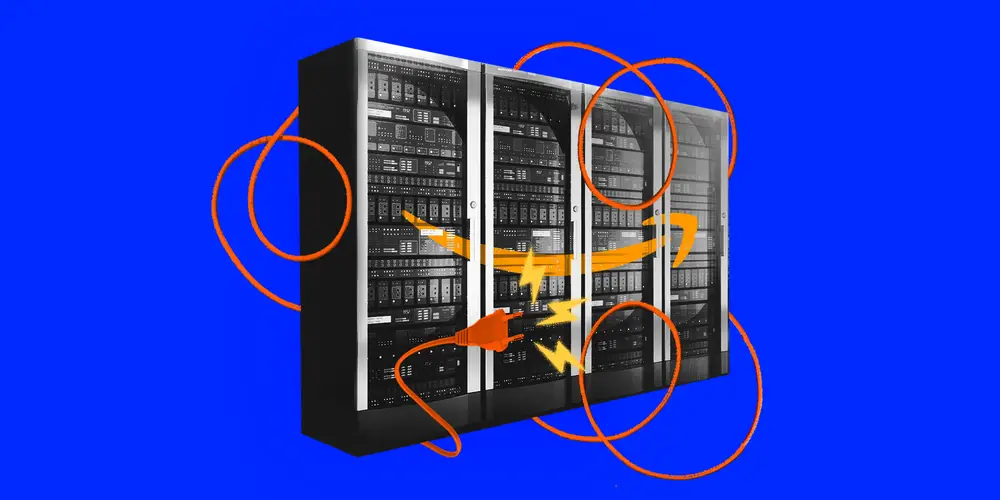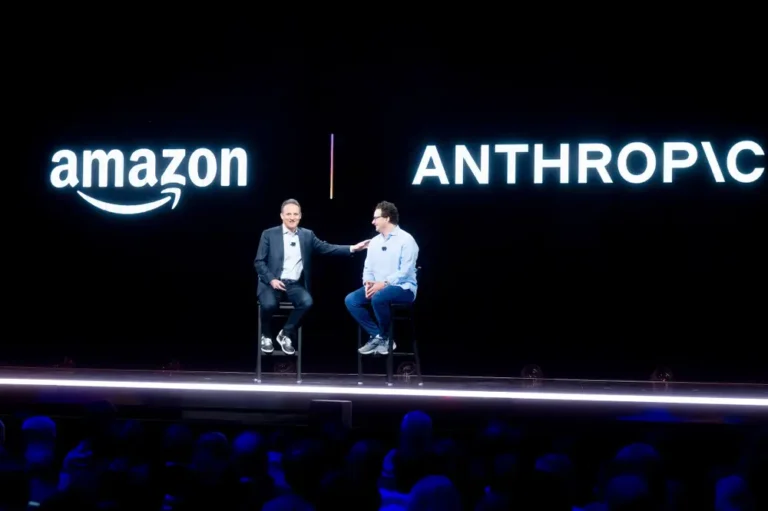Amazon’s AI data center dream runs into the reality of ‘zombie’ facilities, higher costs, and labor shortages

Amazon is spending heavily on data centers to support booming AI workloads, putting it on pace to build 240 new facilities by 2040, according to one estimate.
These plans are increasingly running into physical constraints that are slowing the buildout, according to an internal document, people familiar with the matter, and emails obtained through a public-records request.
“Across the AMER region, we are experiencing headwinds in power, zoning and permitting, water, and workforce/labor that are providing challenges to our long-term capacity growth,” the internal document stated, referring to the Americas market, Amazon’s largest.
As the biggest cloud provider, Amazon’s predicament highlights broader problems facing the tech industry as generative AI upends the status quo. While more companies want access to cloud computing for AI initiatives, there’s only so much power, water, and labor available to support these services.
It’s not just an Amazon problem. Sequoia Capital general partner David Cahn recently predicted data center delays across the sector.
“The need for more power and a better functioning grid was clear before AI,” he wrote in a blog post. “Now, it is becoming urgent.”
Energy demand is growing
It may be natural for a company like Amazon, one of the largest and fastest-growing data center operators, to face these challenges when it is expanding at breakneck speed.
Marc Wulfraat, president of consulting firm MWPVL, told B-17 that Amazon is probably rolling out even more than 240 data centers in coming years. That’s because the cloud giant also leases space in buildings shared with other companies. Collectively, this building spree amounts to almost 75 million gross square feet of space, according to his estimates. That’s the equivalent of roughly 27 Empire State Buildings.
In an email to B-17, Amazon’s spokesperson said customers’ energy demand “continues to grow,” and the company is continuously working on ways to “efficiently build and operate data centers” to meet their needs.
“Nobody knows better than we do that building data centers is exceptionally complex, and by embracing that challenge, we’ve become really good at it over the years,” the spokesperson added. “We’re confident we can continue to build at a rapid pace to provide the cloud capacity our customers will need.”
Doubts about electricity supply
Power might be the most scarce resource. US data center electricity consumption is forecast to triple by 2030, according to Boston Consulting Group, much of it to power generative AI. Bernstein Research recently estimated that electricity demand for AI data centers could exceed supply in just two years without action.
At Amazon, electricity shortages have been a major concern and a topic of almost every leadership meeting in recent years, according to the people familiar with the matter.
Amazon is experiencing power-supply issues in Oregon, Ohio, and Northern Virginia, according to the internal document from May. For example, it noted that PacifiCorp, Amazon’s Portland-based utility partner, has electricity shortfalls and generation constraints forecasted until 2030.
This is leaving Amazon with unpredictable energy supply in some markets and a possible loss of “bridging” solutions that help maintain power during the early stages of construction.
“With the utility power headwind, we are seeing continued risk driven by transmission constraints as well as unexpected changes to committed/available generation, gaps in promised vs delivered incremental power, and potential loss of bridging power as utility infrastructure projects are delayed,” the document explained.
‘Zombie’ data centers
In some markets, so-called “zombie” data centers exist. That’s a term used by some Amazon employees who spoke with B-17 about the electricity-supply problems.
These facilities are also described internally as “operationally blocked” because the data centers can sometimes sit idle as they don’t have access to enough power to run them, according to the people familiar with the matter.
Amazon’s spokesperson told B-17 the company is not familiar with these terms, but said there are a “very small number of cases” where the company decides to complete data center construction before building power is available. “These situations are all managed as part of the standard course of business,” the spokesperson added.

AWS CEO Matt Garman J
Amazon Web Services CEO Matt Garman recently spoke publicly about challenges related to AI data center buildouts, including accessing enough GPUs and power.
During a podcast interview in August, he said customer demand is “mind boggling,” which is requiring “a lot of investment.”
“We’re probably going to be tight for the next little bit of time,” Garman added.
‘Mosquitoes to light’
The company is on the hunt for more energy. It’s conducting “power studies” with utility partners to evaluate additional transmission capacity, which could result in more power allocation, according to the internal document.
The company is also working on ways to reclaim stranded and retired power, the document said, likely in reference to the practice of redeveloping old power plants that have become inactive for economic or sustainability reasons.
Amazon has been more actively seeking partnership opportunities with third-party colocation data center providers, one of the people said. At these facilities, Amazon would simply lease space, transferring the need to secure power to the data centers’ owners.
Additionally, Amazon has started looking beyond well-established data center markets, such as Northern Virginia and Arizona, and is expanding into newer regions like Indiana. Crowded data center regions are running out of power and other resources, making newer locations more appealing.
The company is also more aggressively pursuing alternative energy sources. Last week, Amazon unveiled a plan to lead a $500 million funding round to develop small modular nuclear reactors, following an earlier announcement to purchase a nuclear power plant in rural Pennsylvania.
“It’s almost like mosquitoes to light — we are attracted to power,” one of the people familiar told B-17.
Amazon’s spokesperson said the company’s data center expansion strategy considers several factors, including system resiliency and latency, the availability of renewable energy, and the local government’s long-term commitment. Amazon is also constantly seeking ways to make its data centers more energy efficient by using carbon-free resources, in-house processors, and natural air cooling systems, the spokesperson said.
Higher costs in Silicon Valley
In some cases, Amazon is paying higher prices to get its new data centers up and running.
One example is an Amazon facility in Santa Clara, California, in the heart of Silicon Valley. For the last 2 years, Amazon has held talks with the city of Santa Clara to secure power for a new data center located near Levi’s Stadium, the home of the San Francisco 49ers, according to a city council meeting held in July.
Amazon is in talks for a 15-year, 20-megawatt proposal for this facility under the condition that the company pays the full cost of the energy, whether it uses the power or not, Manuel Pineda, the chief electric utility officer of the City of Santa Clara, said during the meeting. Amazon will have to pay up to 50% higher rates than normal and will be entitled to additional “financial assurances” to cover any contractual risks, Pineda added.
As part of the deal, Amazon also plans to use the 20-megawatt power agreement for a second building on-site, which currently has no electric capacity, according to Pineda.
Amazon’s spokesperson told B-17 that this arrangement has not been finalized, and the project is progressing as expected.

Presentation slide from Santa Clara’s city council meeting
Amazon escalates Santa Clara delays
Amazon appears to be dealing with further delays in Santa Clara. On August 28, an AWS employee wrote to a city official about another facility, a former Owens Corning factory the company purchased in 2023. The email discussed delays at the site and noted that the problems are raising concerns internally at Amazon.
“Delays as significant as this unfortunately impact our ability to serve our customers which has resulted in escalation,” said the email, which was obtained by B-17 through a public-records request.
The next day, another Amazon employee wrote to a Santa Clara city official. “This is time sensitive,” the staffer said. “AWS executives are highly concerned about the constant push in the results.”
‘Straining’ water infrastructure
Another problem is water supply. A growing number of data centers rely on water instead of air to cool the servers and other equipment inside the facilities. This liquid-cooling technology requires a lot of water.
Amazon is “straining local jurisdictions’ existing infrastructure” for water in some regions and is “dependent on long-term infrastructure upgrades or building our own solutions” to mitigate the issue, the internal document stated.
There are zoning and permitting problems, too. Some local jurisdictions are not supporting the re-zoning of industrial property for data center use and have stricter environmental regulations, the document explained. Amazon is “working proactively” with local municipalities to solve these challenges, as they can impact its “future capacity options,” the document added.
Amazon is “one of the world’s most water efficient operators” and its data centers are much more water efficient than the industry average, the company’s spokesperson told B-17.
‘Lack of available skilled labor’
An even bigger problem may be a lack of skilled electricians to build and run these data centers, according to the internal document and people directly involved in these Amazon projects.
Electrical work is a major part of data center construction. But Amazon has struggled to find enough people to do the jobs, especially in rural areas, these people said. Amazon has talked to local colleges, general contractors, and labor unions in certain markets to increase the supply of electricians, one of the people said.

An Amazon data center in Oregon
A shortage of skilled electricians is a growing industry problem. According to last year’s Uptime Institute Data Center Staffing Survey, more than half of respondents said they struggled to fill open positions due to demand outstripping supply.
“For workforce/labor, we are seeing a lack of available skilled labor,” Amazon’s internal document stated. “Which requires us to prioritize where we allocate these resources, and we are becoming increasingly reliant on more expensive travelling [primarily] electricians.”
Amazon’s spokesperson shared blog posts detailing its training programs in this space, adding, “AWS has established a number of workforce development programs and collaborations with education institutions to help ensure a strong pipeline of talent.”






